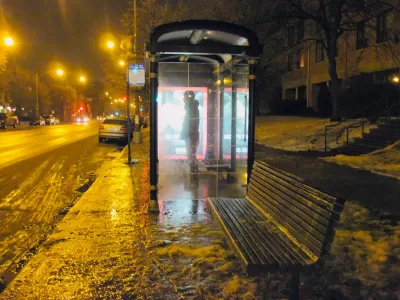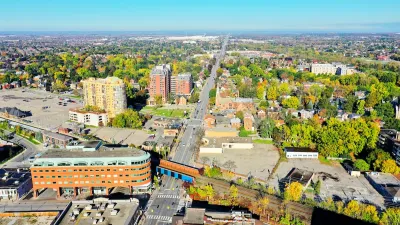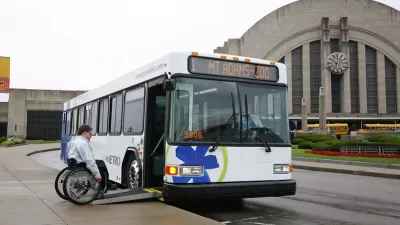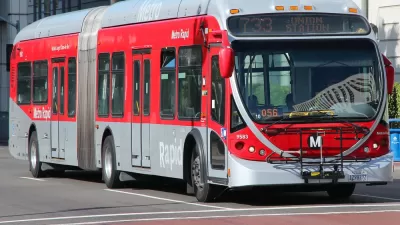Urban light rail has enjoyed a renaissance since the Great Recession, but during the same period cities have quietly reduced bus service. Daniel Hertz argues that while rail is commendable, buses remain a vital transit component.

High-profile transit projects are exciting, but because of their sexiness the dependable and unglamorous city bus may be getting short shrift.
Since the 2008 recession, "Light rail in particular has continued its decade-plus boom, with a service increase of more than 12% in just two years. By contrast, bus service – which already took a heavier hit in the first years of the recession – was cut an additional 5.8%."
Hertz argues that demand for buses has not dropped. In fact, he finds no real correlation between dips in ridership and subsequent service cuts.
The bus decline may have more to do with political demographics: "Even though more people take buses than trains in nearly every metropolitan area in the country, train riders, on average, tend to be wealthier and whiter [...] In other words, rail tends to have a more politically powerful constituency behind it than buses."
"There are serious equity issues with shifting resources from bus to rail – again, not because of anything inherent to those technologies, but simply because of who happens to use them in modern American cities."
For a response to the arguments of Hertz's article, see a Planetizen blog post by Michael Lewyn citing examples of light rail systems that add bus riders, rather than cannibalizing them.
FULL STORY: Urban residents aren’t abandoning buses; buses are abandoning them

Alabama: Trump Terminates Settlements for Black Communities Harmed By Raw Sewage
Trump deemed the landmark civil rights agreement “illegal DEI and environmental justice policy.”

Study: Maui’s Plan to Convert Vacation Rentals to Long-Term Housing Could Cause Nearly $1 Billion Economic Loss
The plan would reduce visitor accommodation by 25% resulting in 1,900 jobs lost.

Planetizen Federal Action Tracker
A weekly monitor of how Trump’s orders and actions are impacting planners and planning in America.

Wind Energy on the Rise Despite Federal Policy Reversal
The Trump administration is revoking federal support for renewable energy, but demand for new projects continues unabated.

Passengers Flock to Caltrain After Electrification
The new electric trains are running faster and more reliably, leading to strong ridership growth on the Bay Area rail system.

Texas Churches Rally Behind ‘Yes in God’s Back Yard’ Legislation
Religious leaders want the state to reduce zoning regulations to streamline leasing church-owned land to housing developers.
Urban Design for Planners 1: Software Tools
This six-course series explores essential urban design concepts using open source software and equips planners with the tools they need to participate fully in the urban design process.
Planning for Universal Design
Learn the tools for implementing Universal Design in planning regulations.
Caltrans
Smith Gee Studio
Institute for Housing and Urban Development Studies (IHS)
City of Grandview
Harvard GSD Executive Education
Toledo-Lucas County Plan Commissions
Salt Lake City
NYU Wagner Graduate School of Public Service





























